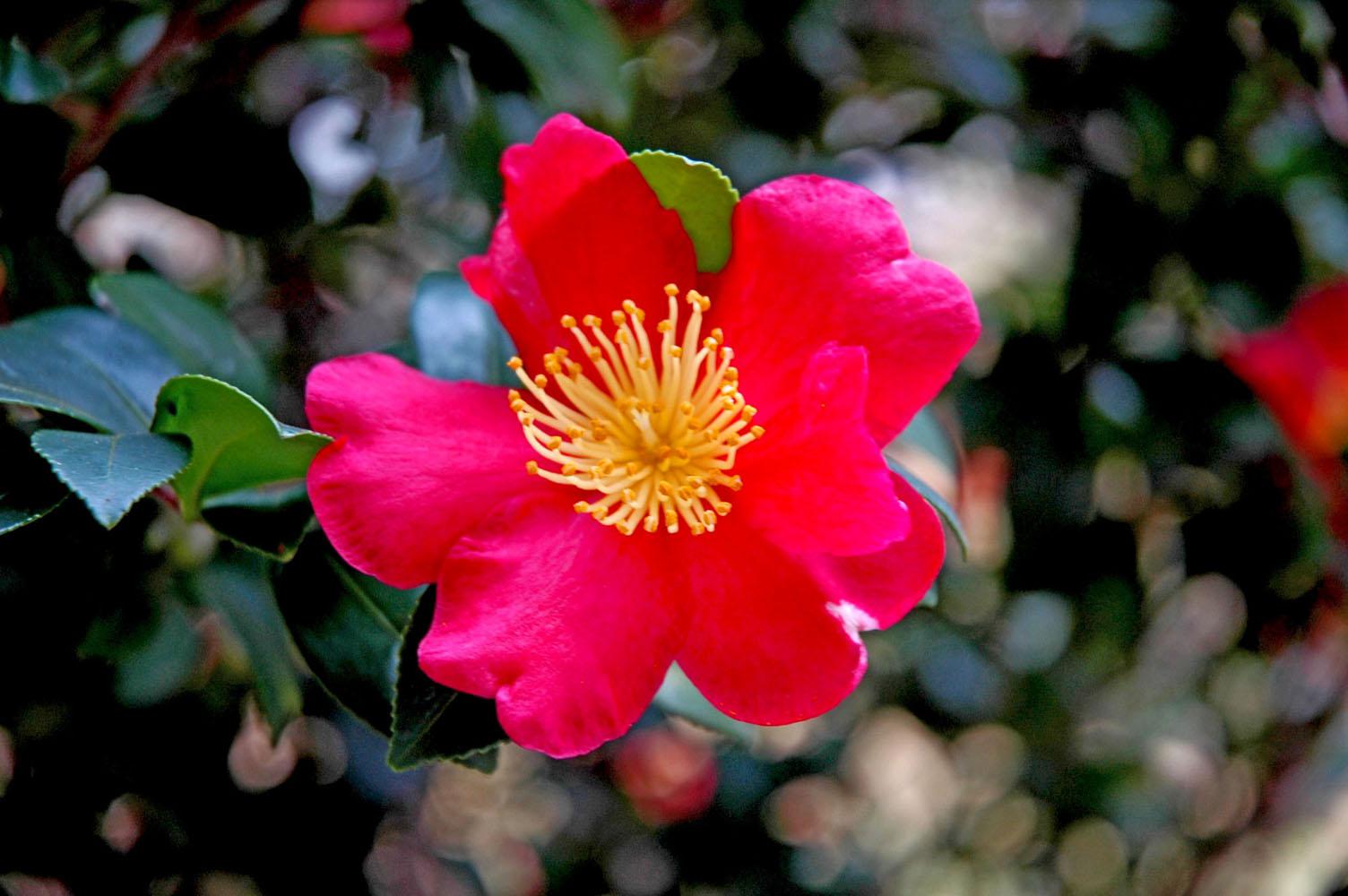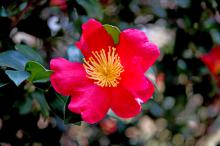Information Possibly Outdated
The information presented on this page was originally released on December 7, 2006. It may not be outdated, but please search our site for more current information. If you plan to quote or reference this information in a publication, please check with the Extension specialist or author before proceeding.
Yuletide Camellia is a great holiday shrub
By Norman Winter
MSU Horticulturist
Central Mississippi Research & Extension Center
It's hard to pass up a shrub with a Christmas name, especially one with the festive colors, that blooms during the holiday season. Yuletide camellias can be found in many of the same places the more common Camellia sasanquas are located, such as near old homes and public buildings.
Yuletide is an award-winning favorite bearing loads of red flowers coupled with bright yellow stamens. It is considered compact in form. Oddly, many that I see in landscapes want to develop naturally into a conical or Christmas tree shape. With a little selective hand pruning, this would not be hard to accomplish. However, if you prune harder, they develop a nice mounding shape.
We buy most other holiday plants on a yearly basis, but Yuletide is a plant that will bloom every year for the holidays. It also offers the bones and structure needed in the winter landscape because of its evergreen nature.
Sasanquas are more sun-tolerant than the Camellia japonica and usually will withstand temperatures 10 degrees colder in the winter. In the 1983-84 freezes, the sasanquas survived better than the japonicas. All camellias require acid soil, but sasanquas tolerate greater extremes in moisture than will most japonicas.
I've noticed more sasanquas around older houses. New homes seem sadly void of both sasanquas and Camellia japonicas.
Shrubs like the Yuletide camellia are the real foundation of the landscape. They create a backdrop, lead us toward a path, or contrast the color of the perennial border or drift of annuals.
We are right in the middle of the best time for planting woody shrubs and trees. By planting woody ornamentals as soon as possible, root growth will increase dramatically before next spring. In fact, I have been to several garden centers in the last few days, and they are loaded with camellias of all sorts ready for planting.
Even though top growth may have ceased, roots continue to develop in the cooler 40 to 50 degree days. When new leaf growth begins in the spring, the root system already will be established and able to supply the plant's requirements.
Research indicates that planting now will give plants almost a full growing season's advantage over those planted next spring.
One thing I try to stress is to put not only camellias, but all shrubs in a bed. Just as we prepare a bed to sleep in at night, we must prepare a bed for the life of our shrubs. These are rich, fertile beds, well drained and separate from the lawn area.
If you are going to the garden center to get a Christmas tree, poinsettia or some other holiday plant, why not pick up a couple of camellias? The one known as Yuletide is one of my favorites, and I am sure you'll love it, too.








